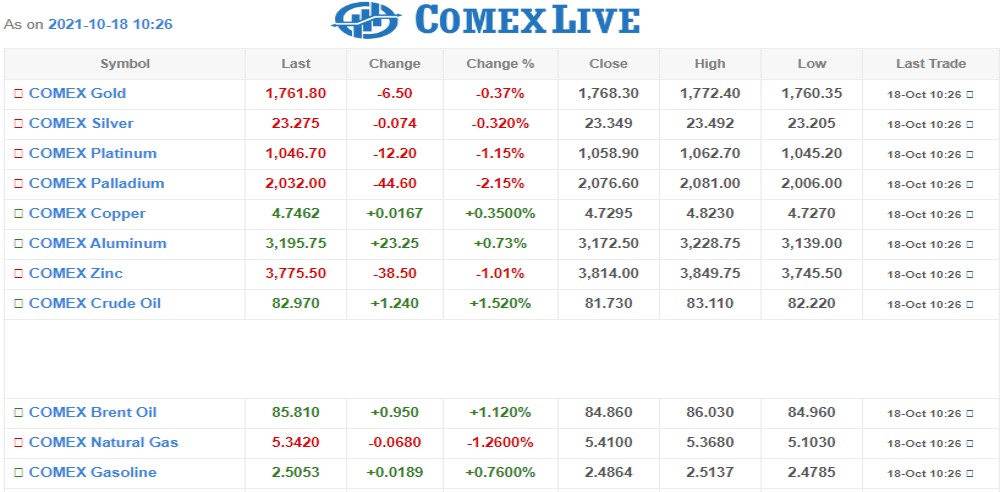
Oil prices jumped to a three-year high above $85 a barrel on Friday, boosted by forecasts of a supply deficit in the next few months as the easing of coronavirus-related travel restrictions spurs demand.
Brent crude futures advanced 1% to settle at $84.86 per barrel. Front-month prices, which touched their highest level since October 2018 at $85.10, were headed for a weekly rise of 3%, which would be their sixth straight weekly gain.
U.S. West Texas Intermediate (WTI) crude futures settled 97 cents, or 1.2%, higher at $82.28 per barrel. The contract is heading for a 3.5% gain on the week, putting it on track for an eighth consecutive weekly rise.
Demand has picked up with the recovery from the COVID-19 pandemic, with a further boost from power generators who have been turning away from expensive gas and coal to fuel oil and diesel.
The White House said it will lift COVID-19 travel restrictions for fully vaccinated foreign nationals effective Nov. 8, which should boost jet fuel demand.
Meanwhile, a sharp drop in oil stockpiles in the United States and the member countries of the Organisation of Economic Co-operation and Development is expected to keep global supply tight.
“It will take a trifecta of events to derail this oil price rally: OPEC+ unexpectedly boosts output, warm weather hits the Northern Hemisphere, and if the Biden administration taps the strategic petroleum reserves,” said Edward Moya, senior market analyst at OANDA.
The International Energy Agency on Thursday said the energy crunch is expected to boost oil demand by 500,000 barrels per day (bpd).
That would result in a supply gap of around 700,000 bpd through the end of this year, until the Organization of the Petroleum Countries and allies, together called OPEC+, add more supply, as planned in January.

Recent Comments